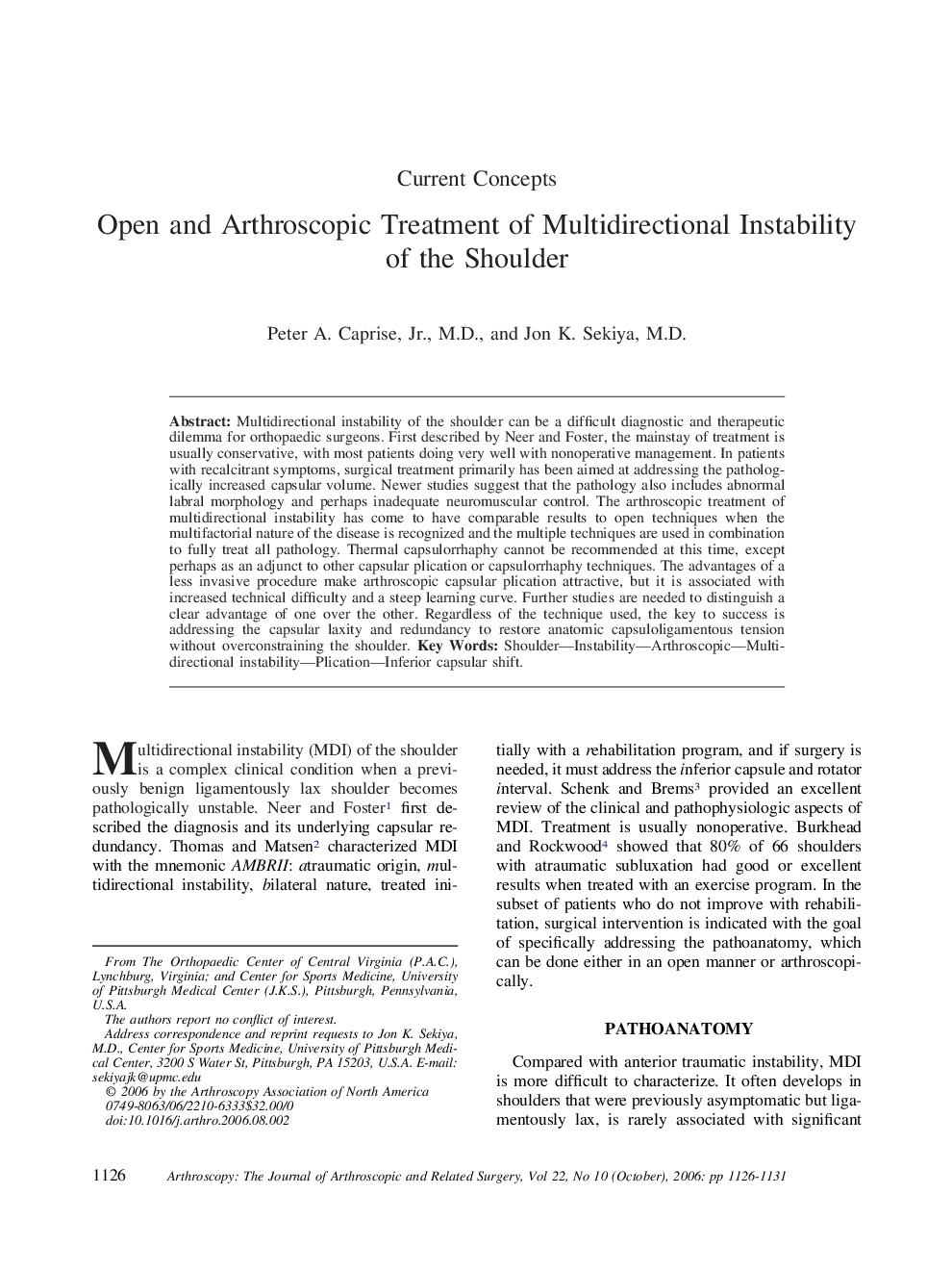| Article ID | Journal | Published Year | Pages | File Type |
|---|---|---|---|---|
| 4047106 | Arthroscopy: The Journal of Arthroscopic & Related Surgery | 2006 | 6 Pages |
Multidirectional instability of the shoulder can be a difficult diagnostic and therapeutic dilemma for orthopaedic surgeons. First described by Neer and Foster, the mainstay of treatment is usually conservative, with most patients doing very well with nonoperative management. In patients with recalcitrant symptoms, surgical treatment primarily has been aimed at addressing the pathologically increased capsular volume. Newer studies suggest that the pathology also includes abnormal labral morphology and perhaps inadequate neuromuscular control. The arthroscopic treatment of multidirectional instability has come to have comparable results to open techniques when the multifactorial nature of the disease is recognized and the multiple techniques are used in combination to fully treat all pathology. Thermal capsulorrhaphy cannot be recommended at this time, except perhaps as an adjunct to other capsular plication or capsulorrhaphy techniques. The advantages of a less invasive procedure make arthroscopic capsular plication attractive, but it is associated with increased technical difficulty and a steep learning curve. Further studies are needed to distinguish a clear advantage of one over the other. Regardless of the technique used, the key to success is addressing the capsular laxity and redundancy to restore anatomic capsuloligamentous tension without overconstraining the shoulder.
